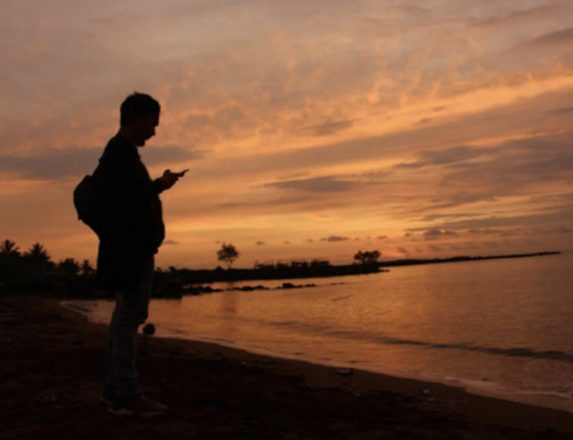Technology has revolutionised the way grey nomads travel in recent years, and the trip-changing breakthroughs just keep on coming.
Telstra has just announced it is to collaborate with SpaceX’s Starlink to bring satellite-to-mobile (direct-to-handset) text messaging to Australians later this year.
Shailin Sehgal, Telstra Group executive of global network and technology, said the service would allow customers to send texts from most outdoor areas on mainland Australia and Tasmania where they had a direct line of sight to the sky.
This is potentially great news for Outback-travelling grey nomads who haven’t invested in their own satellite communication device.

Telstra customers will soon be able to text from just about anywhere
While Telstra’s mobile network already covers 99.7% of the Australian population over an area of three million square kilometres, the sheer size of the country means there will always be large areas where mobile and fixed networks do not reach.
Mr Sehgal says this is where satellite technology will play a complementary role to Telstra’s existing networks.
“What makes this technology so interesting is that for many people, they won’t need to buy a specific compatible phone to send an SMS over Satellite-to-Mobile,” he said. “It will take advantage of technology already inside modern smartphones.”
 Telstra says this is currently really a ‘just-in-case’ connectivity layer that allows a person to make contact for help or let someone know they are okay when they are outside their own carrier’s mobile coverage footprint.
Telstra says this is currently really a ‘just-in-case’ connectivity layer that allows a person to make contact for help or let someone know they are okay when they are outside their own carrier’s mobile coverage footprint.
“This technology will continue to mature and will initially support sending and receiving text messages, and in the longer term, voice and low speed data to smartphones across Australia when outdoors with a clear line of site to the sky,” said Mr Sehgal. “Just as mobile networks didn’t replace fibre networks, it’s important to realise the considerable difference between the carrying capacity of satellite versus mobile technology.”
The Telstra-Starlink collaboration will initially focus on testing and refining a satellite-to-mobile text messaging capability for Australian conditions, ahead of a commercial launch.
Optus had previously announced its own plans to launch a satellite-to-mobile service in partnership with SpaceX’s Starlink, but it failed to meet its launch schedule of late last year.
Are you a Grey Nomad member yet? Click here to find out about the discounts, competitions and other benefits on offer.
My Garmin InReach Mini is my Portable Locator Beacon for outback travel. This already allows me to use my mobile phone to send satellite text messages anywhere in the world, including from areas where I have no mobile coverage. I have an Optus service, so those no coverage areas are huge. In addition the GPS tracking device shows my location and where I’ve travelled on a map that can be shared with family and friends. Map pages can be password protected for privacy.
From Baxter rest stop on the 90 mile straight with an Optus phone I can let my son in Canada know I’ve stopped for the night. He can look at the map and zoom in to see where I’ve stopped and the path I’ve taken to get there. Add the PLB ability to get the RFDS in an emergency and it’s a piece of equipment that is used on every trip.
Please keep an eye out for cyclists as you travel. The number of touring cyclists is growing rapidly. On the countdown to my annual start the Indian Pacific Wheel Ride from Fremantle to Sydney on March 15th.
We are fulltime on the road (almost 3 years in) and carry a Zoleo satellite communicator. As a Telstra customer I’m looking forward to the new direct to phone service as we travel this great country!
Will this cover only mainland Australia or offshore as well? And if yes, how far offshore will be covered?